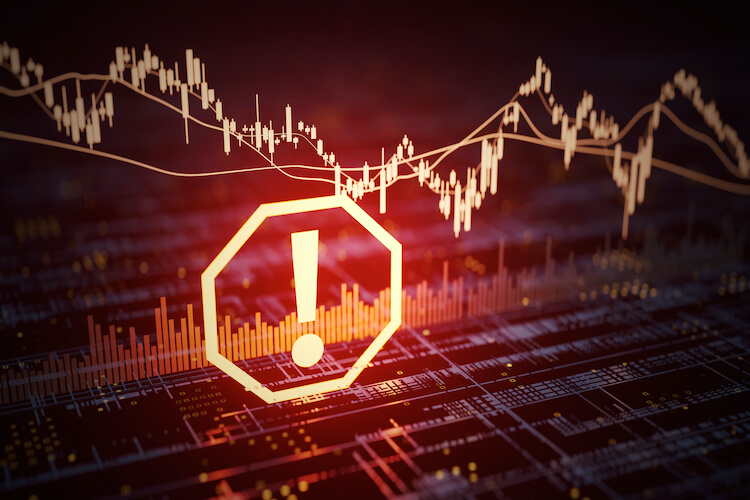
Leverage in Crypto Trading: 6 Key Examples
Table of Contents

Jakob Brezigar
Jakob, an experienced specialist in the field of cryptocurrency market making, boasts an extensive international presence. With Orcabay, he has skillfully managed major operations and deals for a wide array of global stakeholders.
What is leverage trading in crypto?
Leverage trading in crypto allows traders to amplify their position size by borrowing funds, potentially magnifying both profits and losses. For instance, using 10x leverage, a 1% price movement can result in a 10% gain or loss.
Is leverage trading in crypto risky?
Yes, while leverage can amplify profits, it can also magnify losses. Higher leverage means higher risk, especially in the volatile crypto market.
How can I start with leverage trading in crypto?
To start, choose a reputable crypto exchange or trading platform that offers leverage. Open an account, deposit funds, and ensure you understand the platform’s margin requirements and risk management tools before trading.
Our expertise and experience will save you from taking bad decisions in trading! Crypto leverage trading is one of the strategies that many traders use across different trading platforms. Leverage trading increases potential profits for the trader in the crypto market however it may also pose a higher risk and in a case of bad performance even significant losses. Let’s jump into the details now.
Introduction to Leverage in DeFi
Leverage in the decentralized finance (DeFi) world has opened up new opportunities for traders who want to amplify their gains. Here are six examples that provide a more detailed insight into how you can use leverage in crypto:
- Borrowing: The cornerstone of any leverage is the ability to borrow assets to enhance your trading capacity. Essentially, traders use borrowed funds to open positions larger than what their current portfolio allows.
- Margin: This mechanism enables traders to use their existing cryptocurrencies as collateral to take out a loan, which can then be used to execute larger trades.
- Perpetual Futures: A derivative product allowing traders to bet on the future price of an asset without actually having to buy the asset. It doesn’t have an expiration date, hence ‘perpetual.’
- Options: These financial instruments grant the right but not the obligation to buy or sell an asset at a specific price. They offer an asymmetrical payoff, enabling traders to limit their losses while benefiting from potential upside gains.
- Leveraged Tokens: These tokens provide leveraged exposure to crypto assets without requiring traders to manage a leveraged position manually. They automatically rebalance to maintain the target leverage ratio.
- Liquid Staking: A dual-purpose mechanism that enables users to stake their assets to earn staking rewards while simultaneously using the staked asset as collateral to engage in leveraged trading.

DeFi Margin Trading Steps
A Comprehensive How-To Guide
Trading with margin in the DeFi space requires careful planning and execution. Here is an exhaustive, step-by-step guide to get you started:
- Initial Balance: Know your financial standing, meaning your existing crypto assets and their current market valuation.
- Wallet Connection: Connect a secure, self-custody wallet to a DeFi trading platform. Make sure the platform is compatible and reputable.
- Select Leverage: Depending on your risk tolerance and trading strategy, select your leverage amount. Typical choices range from 2x to as high as 100x, though many platforms limit this to a more conservative range like 5x.
- Transaction Confirmation: Validate the transaction terms carefully, including fees, interest rates, and liquidation thresholds. Confirm to open your trade.
- Continuous Monitoring: Markets can change in seconds. Constant vigilance is necessary to ensure your position is not nearing liquidation. Set up alerts and notifications for this purpose.
DeFi Lending vs Margin Trading
Comparing Two Popular Borrowing Mechanisms
Both DeFi lending and margin trading involve borrowing assets, but they serve different financial goals:
- DeFi Lending: This method allows a more extensive range of uses for the borrowed assets. You can lend out your crypto to earn interest, reinvest in other assets, or even use them for personal purposes.
- Margin Trading: In contrast, the borrowed assets in margin trading are strictly used to amplify your trading position, either to go long (buying) or to go short (selling).
DeFi Margin Trading Risks
While the potential for large profits is tempting, the risks are correspondingly high:
- Price Volatility: Crypto markets can be extremely volatile, affecting leveraged positions significantly.
- Liquidation Risk: If the market moves unfavorably, you could get liquidated, often resulting in a total loss of your invested margin.
- Smart Contract Vulnerabilities: Hackers are always on the lookout to exploit weak links, and the smart contracts on which DeFi platforms operate are not always bulletproof.
- Excessive Leverage: The higher the leverage, the smaller the market movement needed to trigger a liquidation.
- Margin Calls: Failing to maintain the required margin level can trigger a margin call, requiring you to deposit more funds to avoid liquidation.

Best Practices for Safe Trading
Risk management is the key to longevity in the crypto trading world:
- Gradually Increase Trade Size: Beginners should start with low leverage and then progressively move to higher levels as they gain more experience and understanding of market dynamics.
- Limit the Time Period of Your Trades: Given the volatility of crypto, longer periods can be more risky, particularly for leveraged positions. Shorter time frames may reduce potential losses due to extreme volatility.
- Set Clearly Defined Goals and Minimize Risk: Know your entry, exit, and stop-loss levels before you initiate the trade. Make sure to adhere to these markers unless there is a substantial reason to revise them, like a major news event affecting the market.
To fully grasp the concept of leverage in crypto trading, let’s consider a couple of examples:
Imagine Trader A starts with $10,000 and uses 5x leverage to enter a long position on Bitcoin. Should Bitcoin’s value increase by 10%, instead of making a $1,000 profit, the trader would realize a $5,000 gain due to the leverage.
Trader B believes Ethereum will fall in price. They use $10,000 to open a 5x leveraged short position. If Ethereum’s price decreases by 5%, instead of gaining $500, they earn a hefty $2,500 profit.

The Mechanisms Behind the Scenes
Leverage trading in the crypto world is a fascinating blend of technology and financial strategy. At its core, it involves borrowing capital to amplify the size of your position. In the DeFi ecosystem, the magic happens when smart contracts come into play, automating this process and effectively eliminating the need for intermediaries like banks or brokers. This level of decentralization often paves the way for quicker, more transparent, and sometimes even more affordable trades compared to traditional financial systems. However, it’s crucial to grasp that with borrowed capital comes heightened responsibility. A significant market shift in the wrong direction can lead to a margin call, which requires traders to deposit more funds to cover their position. This emphasizes the importance of demo trading, where traders can familiarize themselves with the system without real-world consequences. The allure of larger profits tempts many to opt for the maximum leverage available, but it’s essential to remember that while higher leverage can lead to increased profit potential, it also comes with increased risk.
The Attraction and Risks
Leverage trading in the crypto realm allows traders to amplify returns based on small market movements. By using leverage, traders can open positions larger than the capital in their trading account. But this allure has its pitfalls. Given the inherent market volatility of cryptocurrencies, both gains and losses are accentuated. Furthermore, it’s crucial to understand the maintenance margin – the minimum amount required in a trading account to maintain an open position. Falling below this can lead to margin calls, forcing the trader to either deposit more funds or face losses. Essentially, while leverage can boost profits, it equally magnifies risks.

Leverage can serve a multitude of purposes:
- Speculation: Most commonly used for predicting and capitalizing on price movements.
- Hedging: A more conservative approach where leverage is used to offset potential losses in an existing portfolio.
- Diversification: Traders may open multiple leveraged positions in different assets to spread their risk.
Margin trading is essentially a type of leveraged trading where you deposit a percentage of the full value of your position into a margin account, which acts as collateral. This form of trading allows for greater exposure to the market by enabling traders to open positions larger than their existing capital would allow. You then borrow the remaining amount from the exchange or broker. The beauty of margin trading, much like leverage trading, is that it amplifies both your potential profits and potential losses. The reason? Both profits and losses are calculated based on the full value of the position, not just your initial deposit or ‘margin.’ It’s crucial, therefore, for traders to approach margin and leverage trading with a solid understanding and an effective risk management strategy, as the very tools that can lead to substantial profits can also result in significant losses.

Final Tips for Traders
Risk management should include multiple strategies:
- Education: Continuously update yourself about market conditions.
- Diversification: Don’t put all your eggs in one basket. A diversified portfolio can be a safety net during adverse market moves.
- Using Tools: Make use of risk management tools like stop-loss orders or take-profit levels to safeguard against sudden market changes.

Tools for Every Trader’s Arsenal
Various instruments cater to different trading strategies:
- Perpetuals: Perfect for those who don’t want to commit to a fixed expiry date.
- Options: Ideal for those who want to hedge or speculate with a safety net.
- Leveraged Tokens: Suited for traders seeking exposure to certain assets without manual management.
Strategies Tailored to Every Trader’s Profile
There’s a strategy for every trading profile:
- Scalping: For active traders. Involves numerous small trades to capitalize on tiny price fluctuations.
- Swing Trading: Suited for those who can wait out the market, aiming to profit from larger price swings.
- Hedging: Used by conservative traders or in uncertain market conditions. Taking opposite positions can negate losses in your primary investment.

Even though this article is no instruction or order for the enthusiastic traders that wish to raise the margin threshold, it should portray the basic guidelines for executing the strategy if so desired.
Leverage in the crypto arena is a powerful tool that can significantly amplify gains. However, it should be employed judiciously. It’s most appropriate when you have a strong conviction about the market direction, possess a well-constructed risk management strategy, and are prepared both mentally and financially for potential losses. Engaging in a leveraged trade without proper preparation can swiftly lead to margin calls from trading platforms, where the trader is asked to deposit more capital to maintain their position. To potentially profit and hone skills, it’s advisable to start with practice trading sessions in a simulated environment. This allows a trader to familiarize themselves with the nuances of leveraged trades without risking real capital. Remember, the primary objective in trading is not just maximizing profits but also preserving and growing your capital safely. As a beginner, starting with lower leverage is wise, gradually increasing as you gain experience and confidence.



